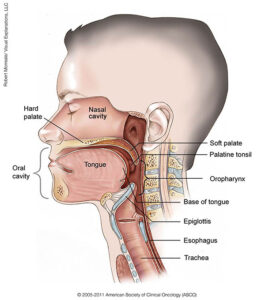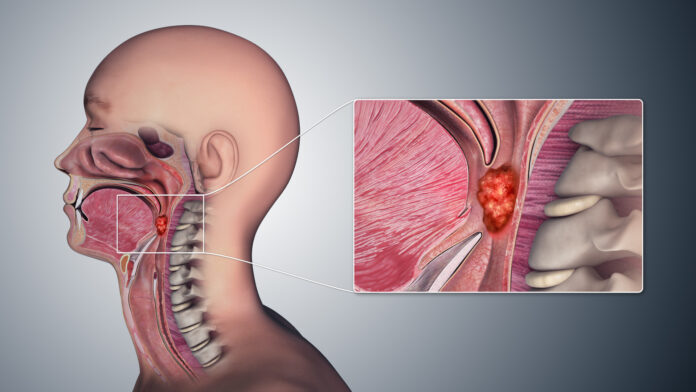The base of the tongue, the palatine tonsils, the posterior pharyngeal wall, and the soft palate are all parts of the oropharynx, which is the back of the throat. Oropharyngeal carcinoma comes in numerous forms.
The majority are squamous cell carcinomas, of which there are two forms identified by testing for the human papillomavirus (HPV). The most prevalent sexually transmitted infection in the US, HPV, is the cause of HPV-related malignancies.
Alcohol and tobacco use are common causes of cancers unrelated to HPV. The majority of oropharyngeal cancer cases in the United States—roughly 15,000 new cases annually—are HPV-positive.
What signs of carcinoma of the oropharynx are present?
Oropharyngeal malignancies frequently have no symptoms. A lump in the neck is usually the initial symptom. Additional signs and symptoms could be:
- Mass in the neck
- Pain or difficulty swallowing
- Voice muffled
- Pain in the ears
- Pain or soreness in the throat
- Mass or lump in the throat’s back
How is cancer of the oropharynx identified?
Many oropharyngeal cancer patients first exhibit a neck lump. An evaluation, which entails a thorough head and neck examination to ascertain whether there is a tumor from which the malignancy has moved to the neck, should be scheduled for any adult who has had a neck lump for longer than two weeks.
This could involve the doctor passing a tiny scope through the nose and looking into the throat to check for any suspicious lumps.
Oropharyngeal tumors ought to be biopsied. When biopsies are necessary for certain tumors that are accessible in the clinic, local anesthetic may be used. Biopsies for various tumors are frequently done in the operating room with the patient asleep.
This allows for a comprehensive assessment of the tumor’s extent and offers diagnostic as well as therapy planning information. Under local anesthetic, a fine needle aspiration biopsy is conducted in a clinic.
This treatment involves inserting a small needle into the neck tumor in order to retrieve cells. This makes it possible for a pathologist to examine the cells under a microscope in order to ascertain whether the tumor in the neck is due to HPV or is malignant.
Treatment for oropharyngeal carcinoma
Treatment for oropharyngeal cancer is contingent upon a number of criteria, such as the nature of the cancer, the size and location of the tumor, lymph nodes, swallowing and speech abilities, and the patient’s general health.
Chemotherapy, radiation therapy, and minimally invasive robotic surgery are among the available treatments. Sometimes, radiation is required following surgery. Treatment for these tumors usually entails a mix of chemotherapy and radiation when surgery is not an option. To provide each patient the best possible strategy, a multidisciplinary team works together.
To lessen the toxicities of treatment while preserving survival rates, scientists are looking into treatment de-intensification techniques. This could mean shorter radiation exposures, as well as chemotherapy or immunotherapy treatments.




























